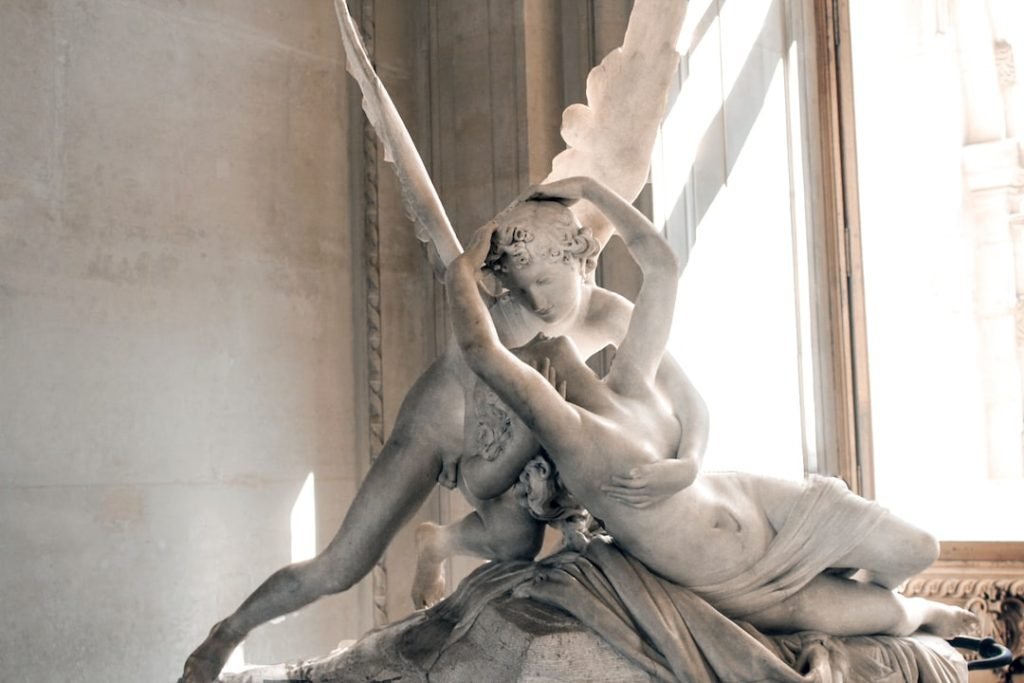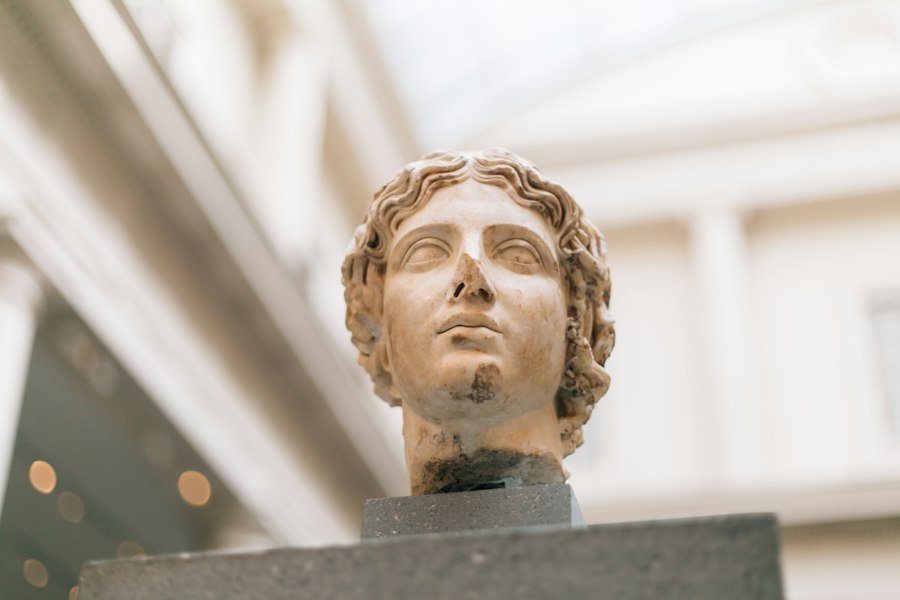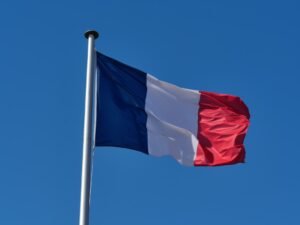

How to Discuss Sculpture in Spanish: 20 Sculptural Terms
Sculpture is a form of art that has been practiced for centuries, dating back to ancient civilizations. It involves the creation of three-dimensional objects using various materials such as stone, wood, metal, and clay. Sculpture is a powerful medium that allows artists to express their creativity and convey meaning and emotion through their work.
Understanding sculpture terminology in Spanish is important for art enthusiasts, students, and professionals alike. It allows for a deeper appreciation and understanding of Spanish sculpture, as well as the ability to engage in meaningful discussions about the art form. By familiarizing oneself with sculpture terminology in Spanish, one can better analyze and interpret the works of Spanish sculptors, and gain insight into their techniques, symbolism, and artistic choices.
Table of Contents
ToggleKey Takeaways
- Sculpture terminology in Spanish can be confusing for non-native speakers.
- Basic forms of sculpture in Spanish include figurative, abstract, and installation.
- Texture is an important element in Spanish sculpture, adding depth and dimension.
- Color can be used to convey emotion and meaning in Spanish sculpture.
- Techniques used in Spanish sculpture include carving, casting, and modeling.
Understanding the Basic Forms of Sculpture in Spanish
Sculpture can take on various forms, each with its own unique characteristics and techniques. Some of the basic forms of sculpture include relief, freestanding, and kinetic sculptures.
Relief sculptures are created by carving or molding a design onto a flat surface. They can be low relief, where the design is only slightly raised from the surface, or high relief, where the design is more prominently raised. In Spanish sculpture, relief sculptures can be found in various mediums such as stone, wood, and metal. An example of relief sculpture in Spanish art is the Puerta de Alcalá in Madrid, which features intricate carvings depicting historical events.
Freestanding sculptures are three-dimensional artworks that are not attached to any surface or background. They can be viewed from all angles and are often placed on pedestals or displayed in open spaces. In Spanish sculpture, freestanding sculptures can be found in public parks, museums, and other outdoor spaces. An example of a freestanding sculpture in Spanish art is the iconic statue of Don Quixote in Madrid’s Plaza de España.
Kinetic sculptures are artworks that incorporate movement. They can be powered by wind, water, or mechanical means, and are designed to create a sense of motion and dynamism. In Spanish sculpture, kinetic sculptures can be found in public spaces and museums. An example of a kinetic sculpture in Spanish art is the “Wind Waves” sculpture by Eduardo Chillida, located in San Sebastián.
The Importance of Texture in Spanish Sculpture
Texture plays a crucial role in sculpture, as it adds depth, visual interest, and tactile qualities to the artwork. In sculpture, texture refers to the surface quality of the material used and can be smooth, rough, polished, or textured. It can be achieved through various techniques such as carving, modeling, or adding additional materials to the sculpture.
In Spanish sculpture, texture is often used to convey meaning and emotion. For example, rough and jagged textures can evoke a sense of rawness or intensity, while smooth and polished textures can create a sense of elegance or refinement. Spanish sculptors often use texture to enhance the narrative or theme of their work. An example of texture in Spanish sculpture is the rough and weathered surface of the “El Cid” statue in Burgos, which symbolizes the strength and resilience of the legendary medieval knight.
The Role of Color in Spanish Sculpture
Color is another important element in sculpture that can greatly impact the overall aesthetic and emotional impact of the artwork. While many sculptures are traditionally made from materials such as stone or metal that do not naturally have color, artists can use various techniques to introduce color into their sculptures.
Color can be applied to sculptures through painting or patination techniques. Painting involves applying pigments directly onto the surface of the sculpture, while patination involves using chemicals to create a chemical reaction that changes the color of the material. In Spanish sculpture, color is often used to enhance the visual impact of the artwork and to convey specific meanings or emotions. For example, vibrant and bold colors can evoke a sense of energy or passion, while muted and earthy tones can create a more somber or contemplative mood. An example of color in Spanish sculpture is the use of vibrant blue and yellow hues in Joan Miró’s “Woman and Bird” sculpture in Barcelona.
Techniques Used in Spanish Sculpture
Spanish sculptors employ a variety of techniques to bring their artistic visions to life. Some common techniques used in Spanish sculpture include carving, casting, and welding.
Carving is the process of removing material from a solid block to create a desired form or shape. It requires precision and skill, as the sculptor must carefully chip away at the material to achieve the desired result. Carving can be done using various tools such as chisels, hammers, and rasps. In Spanish sculpture, carving is often used in stone sculptures, such as the intricate carvings found on the facades of cathedrals and other historical buildings.
Casting is a technique that involves creating a mold of the desired sculpture and then pouring a liquid material such as bronze or plaster into the mold. Once the material has hardened, the mold is removed, leaving behind a replica of the original sculpture. Casting allows for the creation of multiple copies of a sculpture and is commonly used in bronze sculptures. In Spanish sculpture, casting is often used to create large-scale public artworks, such as Eduardo Chillida’s “Peine del Viento” in San Sebastián.
Welding is a technique that involves joining two or more pieces of metal together using heat and pressure. It allows for the creation of complex and intricate sculptures that would be difficult to achieve through other methods. In Spanish sculpture, welding is often used in contemporary and abstract sculptures, such as those created by Julio González.
Analyzing the Composition of Spanish Sculpture

Composition refers to the arrangement and organization of the elements within a sculpture. It involves the careful consideration of factors such as balance, proportion, and spatial relationships. Composition plays a crucial role in sculpture, as it can greatly impact the overall aesthetic and emotional impact of the artwork.
In Spanish sculpture, composition is often used to create meaning and emotion. For example, a sculpture with a balanced and symmetrical composition can create a sense of stability and harmony, while a sculpture with an asymmetrical composition can create a sense of tension or movement. Spanish sculptors carefully consider the composition of their works to enhance the narrative or theme they are trying to convey. An example of composition in Spanish sculpture is the dynamic and asymmetrical arrangement of the figures in Pablo Picasso’s “Guernica,” which adds to the sense of chaos and despair depicted in the artwork.
Examining the Symbolism in Spanish Sculpture
Symbolism is an important aspect of sculpture, as it allows artists to convey complex ideas or emotions through visual representation. Symbols can be objects, colors, or gestures that have a deeper meaning beyond their literal interpretation. In sculpture, symbolism can be used to represent abstract concepts, historical events, or cultural traditions.
In Spanish sculpture, symbolism is often used to explore themes such as religion, mythology, and national identity. For example, religious symbols such as crosses or angels are commonly found in Spanish sculptures depicting religious figures or scenes. Symbols can also be used to represent specific historical events or cultural traditions. An example of symbolism in Spanish sculpture is the use of bulls to represent strength and power in sculptures such as “El Toro” by Pablo Serrano.
Comparing Spanish Sculpture to Other Art Forms
Spanish sculpture stands out from other art forms due to its unique characteristics and techniques. While painting and architecture are also prominent art forms in Spain, sculpture offers a distinct three-dimensional experience that cannot be replicated in other mediums.
Compared to painting, sculpture allows for a more tactile and physical interaction with the artwork. Sculptures can be viewed from all angles and can be experienced in a more immersive way. Additionally, sculpture often occupies physical space and can have a greater presence in the environment compared to two-dimensional paintings.
Compared to architecture, sculpture offers a more intimate and personal experience. While architecture is often monumental and serves a functional purpose, sculpture is created solely for aesthetic and expressive purposes. Sculptures can be placed in public spaces or displayed in galleries, allowing for a more direct and personal engagement with the artwork.
The Evolution of Spanish Sculpture over Time
Spanish sculpture has a rich history that spans centuries, with influences from various cultures and artistic movements. The earliest examples of Spanish sculpture can be traced back to ancient civilizations such as the Iberians and the Romans, who left behind sculptures depicting gods, heroes, and everyday life.
During the Middle Ages, Spanish sculpture was heavily influenced by religious themes and was often used to adorn churches and cathedrals. The Gothic period saw the rise of elaborate stone carvings and wooden sculptures depicting biblical scenes and saints.
The Renaissance brought a renewed interest in classical art and humanism, leading to a revival of classical sculptural techniques. Spanish sculptors such as Alonso Berruguete and Juan de Juni created lifelike sculptures that captured the beauty and grace of the human form.
In the 20th century, Spanish sculpture underwent a period of experimentation and innovation. Artists such as Pablo Picasso, Julio González, and Eduardo Chillida pushed the boundaries of traditional sculpture, exploring new materials, techniques, and concepts. Their works reflected the social, political, and cultural changes happening in Spain at the time.
Tips for Discussing Spanish Sculpture with Confidence
Discussing Spanish sculpture with confidence requires some preparation and research. Here are some tips to help you engage in meaningful discussions about Spanish sculpture:
1. Research the artist: Before discussing a specific sculpture, take the time to research the artist and their body of work. Familiarize yourself with their artistic style, influences, and key themes. This will provide you with a deeper understanding of the sculpture and its context.
2. Understand the context: Consider the historical, cultural, and social context in which the sculpture was created. This will help you interpret the artwork and understand its significance.
3. Analyze the formal elements: Pay attention to the formal elements of the sculpture, such as form, texture, color, and composition. Consider how these elements contribute to the overall aesthetic and emotional impact of the artwork.
4. Consider the symbolism: Look for symbols or motifs within the sculpture and consider their possible meanings. Think about how these symbols contribute to the narrative or theme of the artwork.
5. Engage in dialogue: Discussing art is a subjective experience, and different interpretations are valid. Engage in dialogue with others who have different perspectives or insights. This will enrich your understanding of the artwork and allow for a more comprehensive discussion.
In conclusion, understanding sculpture terminology in Spanish is essential for appreciating and analyzing Spanish sculpture. By familiarizing oneself with the basic forms, texture, color, techniques, composition, symbolism, and evolution of Spanish sculpture, one can engage in meaningful discussions about this art form with confidence. So take the time to explore Spanish sculpture and immerse yourself in its rich history and artistic expressions.
If you want to learn Norwegian, you can register for classes here. We look forward to hearing from you and helping you become fluent in Norwegian.





